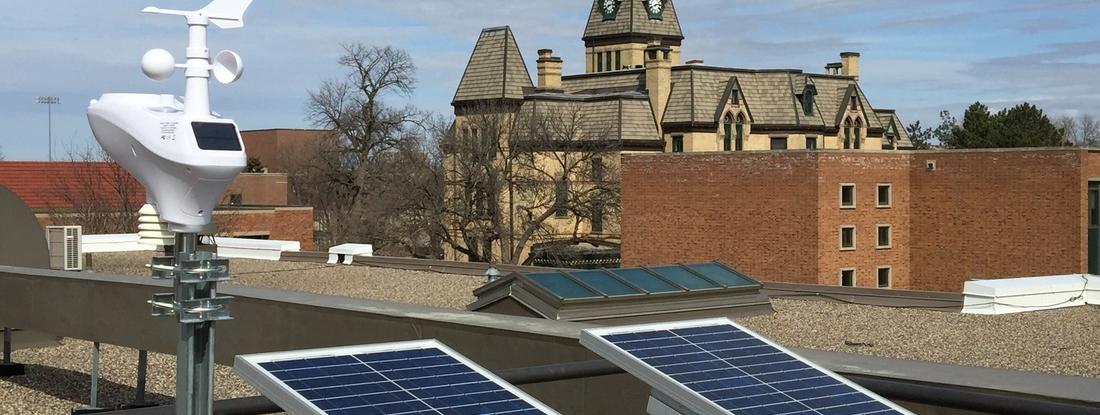Renewable Energy and Environmental Research Laboratory

Mission
The mission of the Hamline University Renewable Energy and Environmental Research (REER) Laboratory is to conduct cutting-edge energy and environmental research projects, to develop working relationships with industry, government, and research entities around the globe, and to share energy and environmental science and technologies with the community.
The REER Laboratory welcomes new partners in developing renewable energy and environmental science and engineering and seeks funds to establish state-of-the-art facilities and equipment on Hamline’s campus.
Director
Dr. Lifeng Dong is the director of REER, a professor and the Emma K. and Carl R. N. Malmstrom Endowed Chair in Physics at Hamline University, as well as the Physics Department Chair. Read more about Dr. Lifeng Dong and his selected publications.
Education
Integrating sustainability into the curriculum
The REER Laboratory offers students quality hands-on experience that brings their classroom learning to research projects. For the PHYS 5920 course, Research Project-Based Advanced Laboratory, a year-long research project will follow the guidelines of the National Student Design Competition for Sustainability Focusing on People, Prosperity and the Planet (P3), which is organized and funded by the U.S. Environmental Protection Agency (EPA). The students will develop, write up, and present their research proposals during the fall semester and conduct scientific projects/engineer design and present results during the spring semester. In the 2016-17 school year, our Hamline student team proposed “Snow Removal for Northern Solar Panel Operation” and received the EPA P3 award of $15,000.
Sharing energy and environmental sciences and technologies with local community
The REER Laboratory brings energy and environmental science and technologies to local K-12 schools. Recently, Hamline physics students proposed “Renewable Energy in Units Anyone Can Understand” and received the Marsh W. White award from the national Society of Physics Students. The goal of the proposed project is to develop youth understanding of the current efficiency of renewable energy and how much better it can be, which is motivated by the importance of innovations in the fields, as well as the necessity of getting young students to think about sustainability.

Research areas
Synthesis and structural characterization of nanoscale multifunctional materials
Nanoscale materials have a wealth of potential applications due to their possession of properties that are difficult to emulate in larger structures. Improving methods of synthesizing these materials allows for greater freedom to manipulate their behavior by controlling their growth down to the atomic level, while characterizing them requires specialized methods in order to reveal structural information and interactions between different materials. The REER laboratory has successfully synthesized numerous nanoscale materials, such as 1-D nanostructures (i.e., carbon nanotubes, ZnO nanowires, Fe2O3 nanorods, TiO2 nanowires, and Ag nanowires), 2-D nanostructures (i.e., graphene and transition metal dichalcogenide), and nanoparticles (i.e., Pt, Pd, Au, Ag, Fe, Co, and Ni).
Fabrication and electrical characterization of energy conversion and storage devices
Current challenges with essential devices such as solar cells, batteries, supercapacitors, sensors, and fuel cells may be addressed by taking advantage of nanoscale materials after determining their properties as described above. They may fulfill new needs left unfilled by traditional materials, serve as replacements for expensive yet essential components such as noble metals, or even boost the capabilities of such materials. The REER Laboratory is currently working on the fabrication and characterization of the following devices: solar cells, supercapacitors, lithium batteries, biosensors, chemical sensors, field effect transistors, and direct hydrogen/methanol/ethanol fuel cells.
Advancing the science and engineering for wastewater treatment and desalination
The REER Laboratory is utilizing nanoscale materials to integrate and optimize current systems for wastewater treatment (photocatalysis, microfiltration, ultrafiltration, and nanofiltration) and desalination (reverse osmosis).

Contact information
-
Undergraduate Admission
-